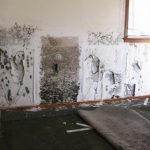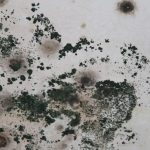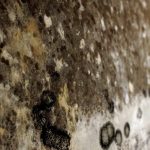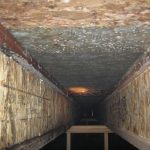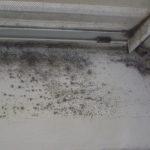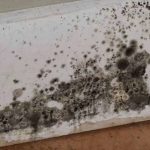Your house interior must look artless and fashionable when it’s full with wooden ornaments – wood-floor, timbers furniture, and frame ceiling are fabulous.
However, unpredictable mold spores could be very threatening to your woody objects. They can grow very well when the surrounding is either humid or dank.
Another explanation would be this simple; wood is something hygroscopic – this term refers to a material which easily absorbs dampness from the air so that the water is retained throughout the solid substance.
We agree that the liquid is handy for the tree’s growth yet it’s unfavorable for your home wood decoration. The matter will surely impact on the surrounding ambiance – the moldy smell can’t be avoided.
Here are some highly recommendations and effective steps to remove mold from wood for you:
Pick the right cleaning solution (mixture)
It takes some commercial products when it comes to taking off the undetected mold from wood. Before applying them, we recommend that you identify the state whether the wood is unfinished or finished.
If your objective is to clear away the mold, the gentle cleaning solution could be relied on.
If you are dealing with the unfinished wood – most of the mold thrives well below the object’s surface, you require using a quick fix focusing on the penetration or depriving the mold’s existence.
Some of the products efficiently killing the mildew include the denatured alcohol and distilled vinegar. These basic household substances are easily found at almost everybody’s home.
In advance way, you can use the commercial mold removal product – we recommend you get the one from the trusted manufacturer (read the instruction carefully and follow it thoroughly).
For the borax solution, add a cup of borax into a gallon of water. Other tricky methods would be baking soda-detergent solution and bleach-detergent solution.
To get rid of mold from the finished wood (usually painted), you can apply several daily household products like the mixture of detergent and water and vinegar.
It will great to pick the removal product from the manufacturer . If you have baking soda and bleach at home, just add enough water and detergent.
Speaking of the bleach, it’s the substance can’t kill the mold effectively – this reason is due to the chemical composition of which is arduous to absorb into the wood.
To tackle this type of matter, benefit the mold removal product with a surfactant. It’s an additive allowing the bleach cut down the roots of the mold.
Mind your safety
Regardless of your cleaning option, an essential factor you have to remember is no other than your security – this one is to keep you off from the possible harm like a respiratory problem, skin sensitivity, rash or even being poisoned.
To protect you from the troubling possibility, you have to use some protection appliances. To cover your breathing organ, use either an air mask or a respirator – the N95 mask is the excellent one.
When it comes to safeguarding your hands, nitrile or rubber gloves are the best selection. The safety goggles without air vents in both sides are to keep your eyes.
Put into use the cleaning solution
You can start applying the cleaning solution by testing it in a tiny part of the wood – be sure to anticipate the solution so that the discoloring could be avertable.
The basic equipment you might have includes a slightly moist cloth, a spray bottle, and a scrub which is low-abrasive. To apply a brush for the painted wood, you need to clear out the tinted surface.
The focal point when using the solution is the balanced amount of the liquid mixture. Too much solution will result in adding the wood’s humidity.
After letting it for a couple of minutes, rub the affected area in a circular motion with the scrub pad or the brush. For the hygiene reason, a disposable towel to wipe the excess is highly recommended.
Sand the affected area if it’s needed
The finished wood requires deeper treatment when the mold exists in the unreachable area. Thus, you are encouraged to sand it lightly. The main purpose of this measure is to pull out the mold roots.
Be sure to add the material while the spot is in humid condition – this way is to block the spread of the mold spores.
Clear up the mold and let the area dry
When you are able to remove the mold , still you need to clean up the area with the right fungicide and detergent. Make sure you allow the wood to be dry – put it under the hot sun with good ventilation.
Avoid leaving in an area with a high level of humidity. If you have no option, place the wood in a space with a dehumidifier.
Check out whether the wood indicates mold
When you think the wood is already dry, another thing to do is to check out whether the mold remains there. Its moldy smell can identify the existence of the tiny fungus.
If it appears frankly or the scent is likely strong, there is no a wise way other than repeating the process from cleaning up with the solution to drying up.
Use better wood coating which protects the wood
Another recommendation (this one isn’t a must) is to apply good wood coating especially if you need to let the wood look more attractive (finished with color).
The finishing product you might try includes the lacquer, protective stain, and polyurethane. Once it’s cover your wood furniture, the mold doesn’t seem to go back.
Those seven steps help you tackle the problem with the mold growing on the surface of your beloved wooden objects at home.
The main point of applying these types of method is a selection of proper solution apt for the condition of the wood. In addition to the liquid mixture, the technique of brushing and cleaning up should be thorough and careful.

